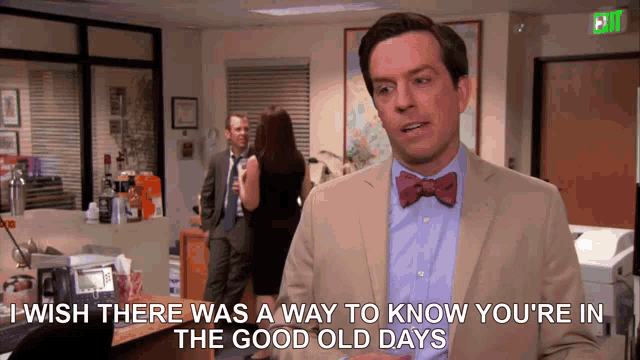Like and subscribe! Follow for more content! Connect and share!
We get bombarded with these calls-to-action incessantly, but I’ve noticed something very interesting going on in my feeds lately…
Sure, I get sprinkles of the familiar faces—friends and family and even influencers—but nearly half of what I’m scrolling through is no longer reflecting the content I’ve curated. Suggested and recommended content dominate my placements. If I actively avoid these impositions, I’m funneled old, stale content from the same five or six accounts. After a short while I found myself asking, is it really worth following anyone anymore?
Audiences, as we’ve known them up to about 2017 or so, were finite. Physical concerts, events, and shows were limited by venue capacity. TV and radio had estimates, but were generally restricted to the general population count, since almost everyone owned one and was tuned in. In the digital space, you had chat rooms, forums, and as platforms matured, followings became the digital audience.
You had a count of how many Myspace or Facebook friends you had, and people used that as an influence number. Tumblr and Twitter succeeded where connections didn’t have to be mutual, but one could amass thousands of followers and sway influence. Entire businesses opened, like Klout, determined to help people see their impact. Staying up to date was done with chronological feeds, user-crafted because you enjoyed the way that particular person did that thing you like. If you owned a business, you knew how many people could read your posts. It was a simpler time.

Then came TikTok. TikTok doesn’t open up with a blank feed—no, that would be a waste of time. You don’t even need to sign up. The “For You” page is a lesson in machine learning, and specifically, how to train a recommendation engine.
If you don’t know what a recommendation engine is, to put it simply, the more you like cute dog videos, the more you’re going to see cute dog videos. Every interaction trains data points specific to the consumer.
This concept is far from new. YouTube started doing it in 2008, and Meta (then Facebook) was doing it with ads when they started seeing real success on mobile in 2012. What sets TikTok apart is its approach to make recommendations the main headliner, not a sideshow. Instagram stopped their chronological feed in 2016, Twitter took until 2021 to embrace a more “suggested” style, but none had been so bold and empowered to ditch one’s ability to establish, cultivate, and nurture a consistently measurable audience.
It’s truly scary to see how accurate the algorithm is, knowing that it’s all curated based on how you’ve interacted, not on your conscious, dictated preferences. What’s worse, in a different way, is knowing that you could put out dozens of videos for months and never get in front of a real consumer.
Today (in 2023, at the time of this posting) TikTok has risen to the upper echelons of social media. They brought the use of recommendation engines to the forefront, and now everyone’s using them. Twitter, now owned by everyone’s favorite crypto-hawking, silver spoon-fed man-child Elon Musk, released theirs to the public, updating their algorithm on a weekly—yes, weekly—basis in an effort to strengthen their own “For You” feed. Instagram has suggested Reels every few posts as you swipe and scroll through, as a way to distract from their push to increase ads. Even LinkedIn, the platform that used to be a glorified digital resume, now has suggested posts after ad placements, blended to disguise themselves as part of your curated network. While it just seems like everyone’s hopping on the bandwagon, there’s one really crucial part to all of this change and development that appears to have been ignored: What about the dang audiences?

In 2016, organic reach, the measure of how many unique people saw your content, was about 10% on Facebook. In 2018, it dropped to around 5-6% thanks to an increase in ad placements. While no stats have been publically available, it’s safe to say unless you have a highly engaged audience, organic reach is likely 1% or less, and with “For You” content, it’s taken some profiles and pages to zero. Organic content has already had to compete with increased ad loads on all platforms, but now they’re competing against content that people don’t even follow!
As a consumer, I either embrace it, discarding all loyalty for the accounts I know and love, or pay, in some cases (Twitter Blue, for example), to see less ads. But the recommendations don’t go away. If you resist, forcibly hiding all suggestions, this forces old posts (some as old as two weeks) to pop back up.
The last position raises another interesting point about content placement: If there’s so much competition for my eyeballs, why show me old content? Why not show me new content from people I haven’t interacted with in a while? The answer, simply, is punishment.
Damn thee who doth refuse to feed the machine that recommends thine content! Feed or be fed, so to speak. It’s a cursed dark pattern that pushes us to unwillingly move in the platform’s desired direction, without showing love to the people and businesses that made the place worthwhile to begin with. I get it’s a pay-to-play world, but it’s like there’s no room for a good old-fashioned underdog story. I’m now pushed to watch the same content, made in a way I’m not crazy about by a person I don’t know, and I’ll probably never see their stuff pop up ever again. It’s a method that sells a ton of ads, but loses the advertiser. At this point, I could launch into virtual influencers and Dead Internet Theory, but we’ll keep it light to wrap things up.
This blog has been a major hit piece on recommendation engines, but I promise there’s a positive spin that I’ve saved, right when I have you hating these things right along with me.
The good news is that for businesses, we can finally let go of the vanity metrics: likes, views, followers, impressions. These have held us all back from measuring what matters: the clicks, the sessions, the website interactions. We can fine tune our analytics to care a little about the noise, but care a lot about what’s really being said about our brands.
For the non-businesses, it’s truly up to you. Follow a person, page, or brand if you’re loyal to it. Engage, interact, sign up for the newsletter. Be social with purpose, or else you’ll be doom-scrolling your way into a coma each night without realizing there’s a big old world out there. No longer clinging to likes, views, and audience is probably a great thing for mental health, as people can focus more on creating and sharing what makes them happy, and less of what people they’ve never met might want.
For me? Everyone gets cute dog videos and pictures, so I will consume more cute dog videos and pictures, whether I follow them or not. Consider it the “cute dog compromise.”




